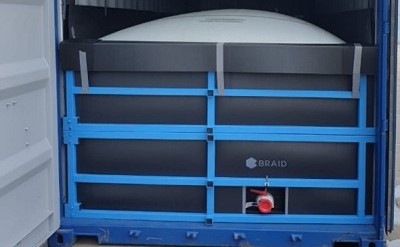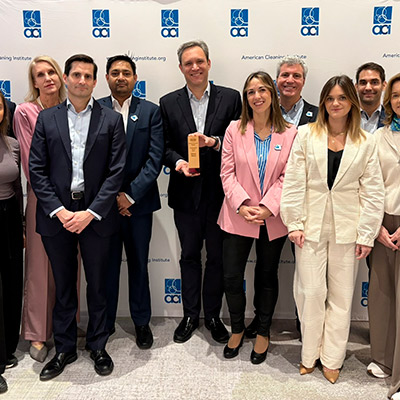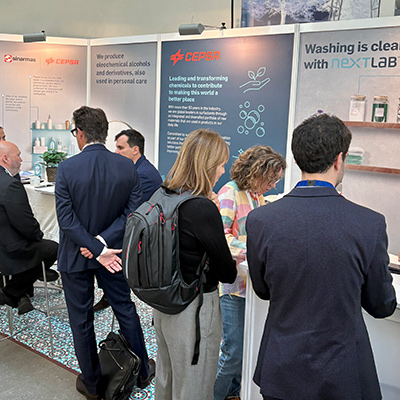- The company has started to test the first recycled flexitank for the transport of chemicals
- This type of packaging reduces generated plastic waste by up to 35%, improving the distribution chain sustainability
The company loaded for the first time the new recycled flexitank for a sea shipment of 23,000 liters of LAB, the world’s most widely used solution in the production of biodegradable detergents for both domestic and industrial use. The product was delivered from Spain in an intra-European transit.
This new type of flexitank has passed all requirements from the international specification PAS 1008:2016 and is manufactured by Hillebrand, formed by the recent acquisition of Braid and Hillebrand Gori, part of the DHL Global Forwarding Ocean bulk Division group. Hillebrand is the only worldwide manufacturer to offer this innovative and sustainable means of transport.
Its uniqueness lies in its composition. Recycled flexitank is made from materials that can be potentially indefinitely recycled, such as polythylenes and polypropylenes.
Made from plastic waste, the new product made up for four layers, two of them up to 70% of recycled polythene (PE), resulting in a contribution of 35% of material from waste in the whole, which improves Cepsa Química’s sustainability index for the distribution chain, while reducing the use of natural resources and related emissions.
“At Cepsa Química we are aware of the great importance that the reduction of plastic poses for the environment. With this goal in mind, we are implementing new initiatives and sustainable options such as the incorporation of recycled flexitank, which avoids, as much as possible, the use of new single-use plastics in favor of recycled ones. Recycling, reducing and reusing are key to our environmental policy”, says Elena Alcalde, Head of the Supply Chain & Procurement at Cepsa Química.
Andre Sangster, technical director of Hillebrand DHL Global Forwarding Ocean Bulk, says: “Taking such steps towards circular packaging development allows us to optimise the design and ensure that responsible care and sustainability co-exist. This equipment reduces environmental impacts such as natural resource use and related emissions. Additionally, we´ve also designed this equipment to be compatible with a robust re-usable bulkhead system, which is recoverable through our global network and offers a sustainable choice over one-trip systems”.




